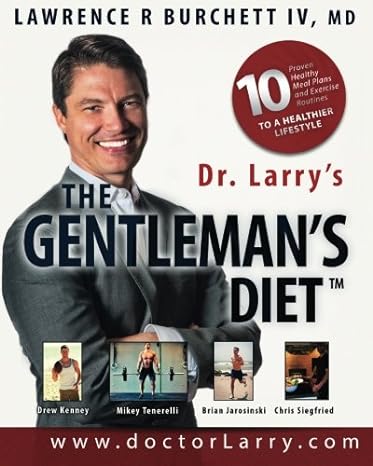An ER Doctor’s Explanation of Bernie’s Heart Attack

[cs_content][cs_section bg_color=”hsl(0, 0%, 100%)” parallax=”false” separator_top_type=”none” separator_top_height=”50px” separator_top_angle_point=”50″ separator_bottom_type=”none” separator_bottom_height=”50px” separator_bottom_angle_point=”50″ style=”margin: 0px;padding: 45px 0px;”][cs_row inner_container=”true” marginless_columns=”false” style=”margin: 0px auto;padding: 0px;”][cs_column fade=”false” fade_animation=”in” fade_animation_offset=”45px” fade_duration=”750″ type=”2/3″ style=”padding: 0px;”][x_custom_headline level=”h1″ looks_like=”h1″ accent=”false”]An ER Doctor’s Explanation of Bernie’s Heart Attack[/x_custom_headline][cs_text]
Written by Dr. Larry
[dropcap]B[/dropcap]ernie had a heart attack.
I went on KTVU San Francisco’s Fox news as their medical expert on Wednesday, Oct 2, to discuss the blockage in his heart, that we were later told was in fact a heart attack. As an ER doctor over 10 years having attended countless patients with heart attacks who have gotten stents, I thought it might be helpful to discuss heart disease and what we know about Senator Sanders and his two stents, as we got that info. I want to keep this primarily medical, but do want to point out the obvious political implications of his heart disease.
[/cs_text][x_video_player type=”16:9″ src=”https://youtu.be/KEnsQ00sI7s” hide_controls=”false” autoplay=”false” no_container=”false” preload=”none” advanced_controls=”false” muted=”false” loop=”false” poster=””][x_custom_headline level=”h2″ looks_like=”h3″ accent=”false”]Wednesday, October 2, 2019[/x_custom_headline][cs_text]
With the following statement from Bernie’s team, the story broke that Senator Sanders had a medical event Tuesday night.
“During a campaign event yesterday evening, Sen. Sanders experienced some chest discomfort. Following medical evaluation and testing he was found to have a blockage in one artery and two stents were successfully inserted. Sen Sanders is conversing and in good spirits. He will be resting up over the next few days. We are cancelling his events and appearances until further notice, and we will continue to provide appropriate updates.”
Let’s break this down, piece by piece.
[/cs_text][x_blockquote cite=”” type=”left”]“…Senator Sanders experienced some chest discomfort.”[/x_blockquote][cs_text]
The most common symptom of a heart attack is the classic “elephant sitting on the chest” chest pain, discomfort or pressure. Heart attack chest pain can often spread to the left arm or neck, and include shortness of breath, sweating and feeling like you are going to vomit.
Now I want to emphasize that while that is the “classic” presentation of a heart attack, people are different, and heart attacks can often happen without chest pain at all, and with other symptoms. In fact, in older women, they often DO NOT present with chest pain, but with weakness, fatigue and nausea. Keep that in mind, especially if you have the risk factors for heart disease, things like a history of high blood pressure, diabetes, high cholesterol, obesity, age and being male. Because heart disease is the #1 killer of both men and women in the US.
Bernie did the right thing, he went immediately to the ER to get checked. This is an instance where I would absolutely call an ambulance.
[/cs_text][x_blockquote cite=”” type=”left”]“Following medical evaluation and testing…”[/x_blockquote][cs_text]
Let’s talk about evaluation and testing of chest discomfort in the ER, as the care Bernie likely received is pretty standard throughout the country.
When you say “chest pain” in an ER, the first thing we do universally everywhere is immediately get an EKG, or ElectroCardioGram, to look for a heart attack. We want to do this truly STAT. In fact, the EKG is even run in the ambulance while driving to the hospital so we are ready with a plan in place upon a patient’s arrival. If Bernie went to the hospital in an ambulance, they would have done an EKG, and already begun the triage process of what to do, so they were ready for him when he arrived. Pretty slick part of a health care system most politicians like to rant about, right?
Let’s look more closely at what exactly we look for on an EKG in the ER when we are looking for a heart attack. I think you’ll appreciate understanding part of how we really evaluate someone in a true emergency.
This is a normal EKG, just glance over it, looking from left to right on the 4 lines, noting the points and the humps.
[/cs_text][x_image type=”none” src=”https://doctorlarry.com/wp-content/uploads/2019/10/1.png” alt=”” link=”false” href=”#” title=”” target=”” info=”none” info_place=”top” info_trigger=”hover” info_content=””][cs_text]Now when someone comes in with chest pain and I’m worrying about a heart attack, my eyes go right to the a specific part of the EKG called the ST segments (see graphic below), this is the one part I want you to key in on. The ST segment is the line between the point (the QRS) and the hump (the T wave). When this ST segment is up or “elevated,” that can mean heart attack in the right situation. The graphic shows the difference very well. [/cs_text][cs_block_grid type=”two-up”][cs_block_grid_item title=”Block Grid Item 1″][x_image type=”none” float=”none” src=”https://doctorlarry.com/wp-content/uploads/2019/10/2.png” info=”none” info_place=”top” info_trigger=”hover”][/cs_block_grid_item][cs_block_grid_item title=”Block Grid Item 2″][/cs_block_grid][cs_text]
In the above graphic, the top ST segment is normal, compared to the bottom one, where you can see how that ST line is higher up the pointed steeple part of the EKG, almost climbing up here? In this case, we call this a STEMI (which stands for ST segment Elevation Myocardial Infarction (STEMI), or heart attack). The EKG below shows what a STEMI would look like on a full EKG.
[/cs_text][x_image type=”none” src=”https://doctorlarry.com/wp-content/uploads/2019/10/3.jpg” alt=”” link=”false” href=”#” title=”” target=”” info=”none” info_place=”top” info_trigger=”hover” info_content=””][cs_text]
Back to Bernie. He undoubtedly got an EKG as part of the evaluation of his chest pain. Now an EKG isn’t the only thing we do in the ER to evaluate chest pain and diagnose a heart attack–there are 3 basic things we do.
- The story. Listen to the patient describe their symptoms, do they sound like they could be from a heart attack, or could they be something else serious (a bacterial infection in the lungs = pneumonia, a clot in the lungs = PE or Pulmonary Embolus or a tear in the main artery carrying blood to the body = Aortic dissection), or is the chest pain less serious like a sore muscle or inflamed ribs, or heart burn? The story also includes asking about someone’s history and risk factors for heart disease. Highest risk is someone who already has stents and prior heart attacks. Additional risk includes diseases that lead to heart attacks, like high blood pressure, high cholesterol, diabetes, and obesity, in addition to sex (being male) and age, smoking, drug use, etc. So someone’s story is usually the first thing we get.
- EKG, on every patient with chest pain, I can’t think of exceptions to this rule.
- Blood tests for heart attack, which is called troponin. When heart muscle cells die, they release a microscopic amount of a protein called troponin, that is only found in heart muscle. Normally, there should be no troponin circulating in your blood. So we use this test in the ER to screen for a heart attack. If the troponin is elevated, it may mean heart cells are dying, and that’s exactly what a heart attack is–heart cell death.
To diagnose a heart attack in the ER and send people for the next step of evaluation and treatment, we put all 3 together. A story of classic chest pain with positive EKG and elevated troponin–that’s a heart attack, and we need to move emergently to treatment, which is often life-saving.
Now sometimes we don’t wait for the blood work to diagnose a heart attack. Sometimes we can see the EKG shows an obvious heart attack like the STEMI we reviewed above, and we can move on it without waiting for the blood test to come back. I’ve done this countless times in my career. This, too, is standard of care, because every minute could be losing more heart muscle! Minutes matter.
For Bernie, his doctors certainly listened to him and knew his history (I am unaware of his medical history besides his age of 78 and being male, both of which are risk factors for heart disease), and I’m sure he got an EKG. They could have gone straight to the cath lab with that, or they may have done blood work and waited for that test, I am not privy to that info.
There are additional tests of blood, chest X-ray and urine that are routine–but it’s the story, EKG and troponin that we use to diagnose a heart attack.
[/cs_text][x_blockquote cite=”” type=”left”]“he was found to have a blockage in one artery”[/x_blockquote][cs_text]
From the initial ER evaluation including EKG and troponin blood test, the doctors were worried enough about a blockage that they moved to do what is called “Cardiac Catheterization,” or as we say, “Bernie needs to go to the cath lab,” the procedure room in the hospital where it’s done. Let’s talk about what cath is.
The basic question is simple–is there a blockage in the arteries of the heart or not. Let’s review a little heart anatomy for a second. The heart is a fascinating organ, which not only pumps blood to all of the other organs of the body, but it pumps blood, well, to itself. These arteries that supply the heart with blood we call (can you guess…) coronary arteries. The word “coronary” means crown, these arteries look like a crown around the heart. Anyway, the heart arteries, here is a graphic of them below.
Just get a sense of how there are main arteries that run on the outside of the heart muscle, and branch off to smaller arteries that carry blood to the whole heart. Incredible and beautiful, really.
[/cs_text][cs_block_grid type=”two-up”][cs_block_grid_item title=”Block Grid Item 1″][x_image type=”none” float=”none” src=”https://doctorlarry.com/wp-content/uploads/2019/10/4.jpg” info=”none” info_place=”top” info_trigger=”hover”][/cs_block_grid_item][cs_block_grid_item title=”Block Grid Item 2″][/cs_block_grid][cs_text]
So when a patient, like Bernie, goes to the cath lab, we want to answer the question–does he have a blockage? In other words, is there something stopping the flow of blood to part of his heart. Like plumbing, you can imagine if there were a clogged or plugged artery (so much of the language is directly plumbing–for good reason, good analogy), if there were a 100% clog in an artery, blood would not go through, and look back at that heart graphic above, part of the heart muscle would not get the blood it would need, and that heart muscle would be at risk of dying (causing the chest pain, etc symptoms). See the graphic below.
[/cs_text][cs_block_grid type=”two-up”][cs_block_grid_item title=”Block Grid Item 1″][x_image type=”none” float=”none” src=”https://doctorlarry.com/wp-content/uploads/2019/10/5.jpg” info=”none” info_place=”top” info_trigger=”hover”][/cs_block_grid_item][cs_block_grid_item title=”Block Grid Item 2″][/cs_block_grid][cs_text]
So what do we do to check the heart arteries for blockages? We squirt dye into the arteries, and take an X-ray. Simple really, but we use big medical words like Coronary angiogram instead of saying “Let’s go squirt some dye in the heart arteries to see if there’s a clogged artery we need to open.” But that’s mechanically what it is.
And this is what the angiogram Xray looks like below. On the left, in the middle of the circle, you can see how there is an artery full of dye (the black part), and then it goes blank, or disconnected. That’s a blockage, the dye cannot pass through. On the right, you see what it looks like after it has been opened up with the balloon, a process called angioplasty. This is the image that cardiologists look at all the time when doing the best test to check for a blockage.
[/cs_text][x_image type=”none” src=”https://doctorlarry.com/wp-content/uploads/2019/10/6.jpg” alt=”” link=”false” href=”#” title=”” target=”” info=”none” info_place=”top” info_trigger=”hover” info_content=””][x_blockquote cite=”” type=”left”]“…and two stents were successfully inserted.”[/x_blockquote][cs_text]
So they open the blockage with the balloon, and blood flow was restored to the part of Bernie’s heart that was not getting enough blood. He probably felt better in that moment, if not before when he got meds for pain. But that’s when his artery was unclogged. Then he got 2 stents. Why do we need to prop open the blockage after we open it with the balloon?
Let’s talk about what exactly a blockage is. More visuals!
Below, the top artery (A) is wide open, and the bottom (B) is partially clogged with a plaque.
[/cs_text][x_image type=”none” src=”https://doctorlarry.com/wp-content/uploads/2019/10/7.gif” alt=”” link=”false” href=”#” title=”” target=”” info=”none” info_place=”top” info_trigger=”hover” info_content=””][cs_block_grid type=”two-up”][cs_block_grid_item title=”Block Grid Item 1″][x_image type=”none” float=”none” src=”https://doctorlarry.com/wp-content/uploads/2019/10/8.jpg” info=”none” info_place=”top” info_trigger=”hover”]
And under a microscope:
[x_image type=”none” float=”none” src=”https://doctorlarry.com/wp-content/uploads/2019/10/9.jpg” info=”none” info_place=”top” info_trigger=”hover”][/cs_block_grid_item][cs_block_grid_item title=”Block Grid Item 2″][/cs_block_grid][cs_text]
The basics of the plaque are it has fats in the middle, with a fibrinous cap. I think of it like an egg shell with fat inside.
Now there are 2 ways these plaques (clogs) can cause problems. They can get bigger and bigger slowly over time until they almost totally block the artery, like a trickle of blood still passing through. Patients feel this when they exert themselves, by going up stairs or jogging–and they feel chest pain or shortness of breath. Why? Because the heart is working and needs blood (with oxygen) for that heart muscle to contract. With an almost complete clogged artery, the muscle doesn’t get enough blood, and the body lets you know something isn’t right–with pain, weakness, or shortness of breath, etc. That’s one way we feel these blockages. But if you have a 50% blockage, you probably won’t feel it. That gets scary, and is a good reason to talk to your doctor about the latest ways to be evaluated for heart disease if you have sufficient risk.
Now, the second way that clogged arteries can cause symptoms, is if all of the sudden, that egg cracks, and the 50% blockage turns into a 100% blockage because the blood forms a clot at the crack. We call that “plaque rupture” and it is what we usually mean when we say heart attack. There was a partial blockage before, and then something happens (random, stress, etc), and now there is a 100% blockage and heart attack happening, no blood is flowing through that totally clogged artery. It’s time for action to diagnose and open it up. And for what you can do as the patient or loved one of them, get to the ER STAT!!
We knew that Wednesday that Bernie had a blockage, and got 2 stents to open it up. What exactly is a stent? Look at the pics, it’s a little metal mesh tube that props the artery open, pushing back on all that fat filled egg plaque, keeping it open so that it doesn’t clog again after you take out the balloon (middle picture). So a heart doctor will squirt the dye in, look at the arteries, identify if there is a blockage, open the blockage with the balloon, and then place the stent in there to keep it open.
[/cs_text][cs_block_grid type=”two-up”][cs_block_grid_item title=”Block Grid Item 1″][x_image type=”none” float=”none” src=”https://doctorlarry.com/wp-content/uploads/2019/10/10.jpg” info=”none” info_place=”top” info_trigger=”hover”][/cs_block_grid_item][cs_block_grid_item title=”Block Grid Item 2″][x_image type=”none” float=”none” src=”https://doctorlarry.com/wp-content/uploads/2019/10/11.jpg” info=”none” info_place=”top” info_trigger=”hover”][/cs_block_grid_item][/cs_block_grid][cs_text]
In Bernie’s case, he got 2 stents for one blockage. It’s unclear if the blockage was long, or if they put one stent on top of another. Either way, the procedure was successful (don’t take a good cardiologist for granted, their performance counts, as I discussed in this week’s video podcast with Navy Seal Kaj Larsen.
[/cs_text][x_video_embed no_container=”false” type=”16:9″][/x_video_embed][x_custom_headline level=”h2″ looks_like=”h3″ accent=”false”]LET’S ACKNOWLEDGE POLITICS AND MEDIA[/x_custom_headline][cs_text]
With Bernie, neither his team nor the media ever used the language heart attack initially (Wednesday). They said “blockage” which could have been either one of those 2 we just discussed above. He could have had a significant (such as 90%) blockage that was giving him symptoms, or he could have cracked the shell of the plaque, developed the 100% blockage and had a resulting heart attack. Using the word “blockage” could mean either of those things and was intentionally vague. A 100% blockage and heart attack is much more serious than a partial blockage that is now open.
I can understand their fear of the word heart attack, it terrifies the public, and would certainly raise many more questions: was his heart permanently damaged? If so, how much? Is a 78 year old man with a stent healthy enough to run for president? Is he healthy enough to survive a 4 year term? If age wasn’t a question and focus for Bernie before, it and his health will be now.
On the segment with Fox, you can see me stay away from these questions and respect Bernie’s team’s usage of the word blockage, although from the story of chest pain that got an emergency stent, most of us suspected it was a heart attack. This story of course, was not over.
[/cs_text][x_custom_headline level=”h2″ looks_like=”h3″ accent=”false”]Friday, October 4, 2019[/x_custom_headline][x_blockquote cite=”” type=”left”]“Sen. Sanders was diagnosed with a myocardial infarction. The Senator was stable upon arrival and taken immediately to the cardiac catheterization laboratory, at which time two stents were placed in a blocked coronary artery in a timely fashion. All other arteries were normal.”[/x_blockquote][cs_text]The above statement by his treating physicians in Las Vegas, Arturo E. Marchand Jr. and Arjun Gururaj, was made Friday. Let’s talk about it.[/cs_text][x_blockquote cite=”” type=”left”]“Sen. Sanders was diagnosed with a myocardial infarction.”[/x_blockquote][cs_text]
Bernie had a heart attack. There is no more wondering if his blockage was in fact a myocardial infarction. They have come forward with that information. Myo = muscle, cardial = heart, infarction = tissue death. Bernie lost some heart tissue that Tuesday and even though he got the blockage opened quickly and 2 stents in place, he lost some heart cells.
[/cs_text][x_blockquote cite=”” type=”left”]“The Senator was stable upon arrival and taken immediately to the cardiac catheterization laboratory.”[/x_blockquote][cs_text]
This makes me think he was taken immediately to the cath lab when he arrived at the hospital, without waiting for blood tests, which isn’t uncommon. I suspect (but have no inside info) that his EKG showed clear evidence of a heart attack, possibly the ST elevation of a STEMI like we discussed above, or something similar.
[/cs_text][x_blockquote cite=”” type=”left”]“at which time two stents were placed in a blocked coronary artery in a timely fashion. All other arteries were normal.”[/x_blockquote][cs_text]
We already knew he had 2 stents, now they also inform us that he did not have other blockages. Adding that all other arteries is normal, which we will need to quality. His angiogram had 1 blockage that got 2 stents, and there were no other significant blockages that required stenting. Ok.
That only means there are no other big clogs. But that doesn’t mean that little clogs aren’t building elsewhere in the heart, or the rest of the body, for that matter.
[/cs_text][x_custom_headline level=”h2″ looks_like=”h3″ accent=”false”]A HEART ATTACK MEANS HEART DISEASE[/x_custom_headline][cs_text]
Initially, when I read, “all other arteries were normal” it made me think that he’s otherwise fine.
When we discover disease of one artery, whether it is the heart (heart attack), the brain (stroke), or even the penis (impotence), it is often an indicator of some amount of disease in arteries everywhere. It’s systemic. Literally a symptom of deeper disease. Because the same blood, the same genetics, are in all the arteries in his whole body. I think of it like there are little small clogs and narrowings all over that plumbing, and now we are aware of this.
Bernie has heart disease, even though his blockage was opened with stents.
We don’t know (and probably never will) know how much of his heart is permanently damaged. Additional tests such as an ultrasound of the heart (Echocardiogram) tells us how well his heart is contracting. Stress tests tell us how the heart responds to a challenge. And we can even get information from walking fast, going up stairs and a jogging. I wouldn’t wait for that info to ever be public.
[/cs_text][x_custom_headline level=”h2″ looks_like=”h3″ accent=”false”]POLITICS[/x_custom_headline][cs_block_grid type=”two-up”][cs_block_grid_item title=”Block Grid Item 1″][cs_block_grid_item title=”Block Grid Item 2″][/cs_block_grid][cs_text]
The questions the American people will answer in the polls in the weeks to follow, I would imagine, is how do we feel about a 78 year old man with heart disease running for president? Can he survive a stressful campaign, and 4 more years of a term? These won’t be easy questions to answer; watch closely for how Senator Sanders and his team address them. And I don’t mean by reaffirming Medicare for All.
I suspect Bernie’s unfortunate medical event may be damaging to some other candidacies as well, given he had this heart attack at age 78. Joe Biden is 76, and would be 78 when inaugurated. Donald Trump isn’t far off at 73 and would be 74 if starting a second term.
There have only been 2 other president’s over 70 while in office. Regan was almost 78 when he completed his second term. And Eisenhower 70. That’s it. Young Democratic hopeful Julian Castro erred in mocking Joe Biden’s memory on the debate stage, testing the waters of making age an issue. Does age bring the asset of wisdom and a wealth of experience? It should. Or is it outweighed by medical risk.
There are many over 70 who are in incredible physical and mental shape, fully capable of leading the country. And some that aren’t. Can’t say I expect politicians to be anything more than political when disclosing their personal medical information during election season. Age, and related health, will now be more and more an issue that we the American people will consider in our country’s leaders. As this part of the story continues to evolve, I’ll continue to comment on it.
Glad Bernie is alive and doing well. I wish him a speedy recovery, and inspired luck during the rest of his campaign.
[/cs_text][cs_block_grid type=”two-up”][cs_block_grid_item title=”Block Grid Item 1″][cs_block_grid_item title=”Block Grid Item 2″][/cs_block_grid][x_custom_headline level=”h2″ looks_like=”h3″ accent=”false” style=”color: hsl(207, 100%, 19%);”]Hear From Dr. Larry[/x_custom_headline][x_subscribe form=”922″][/cs_column][cs_column fade=”false” fade_animation=”in” fade_animation_offset=”45px” fade_duration=”750″ type=”1/3″ style=”padding: 0px;”][x_widget_area sidebar=”sidebar-main” ][x_widget_area sidebar=”ups-sidebar-adoption-services” class=”man”][/cs_column][/cs_row][cs_row inner_container=”true” marginless_columns=”false” style=”margin: 0px auto;padding: 0px 0px 30px;border-style: solid;border-width: 1px;”][cs_column fade=”false” fade_animation=”in” fade_animation_offset=”45px” fade_duration=”750″ type=”1/1″ style=”padding: 0px;”][cs_text]
Featured Content
[/cs_text][/cs_column][/cs_row][/cs_section][cs_section parallax=”false” separator_top_type=”none” separator_top_height=”50px” separator_top_angle_point=”50″ separator_bottom_type=”none” separator_bottom_height=”50px” separator_bottom_angle_point=”50″ style=”margin: 0px;padding: 20px 0px 0px;”][cs_row inner_container=”true” marginless_columns=”false” style=”margin: 0px auto;padding: 0px;”][cs_column fade=”false” fade_animation=”in” fade_animation_offset=”45px” fade_duration=”750″ type=”1/1″ style=”padding: 0px;”][ess_grid alias=”featured_content”][/cs_column][/cs_row][/cs_section][/cs_content]


